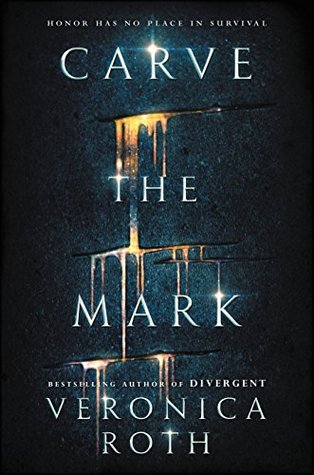

When teen fiction author Veronica Roth previewed the debut of her newest book “Carve the Mark,” on Entertainment Weekly, Roth answered questions about her book’s similarities to “Star Wars,” “The Giver” and “Harry Potter” among other works. She affirmed that many similar young adult (YA) works were subjects of her inspiration from when she was younger, calling “Carve the Mark” “a little ‘Star Wars,’ a little ‘Dune’ by Frank Herbet.”
This inspiration seems to completely embody the spirit that Roth has chosen to pursue when writing “Carve The Mark.” While compelling, “Carve the Mark” resembles a mosaic of borrowed plot, conflict and setting from other similar YA novels.
Reflecting many aspects of a stereotypical dystopian story, much of “Carve the Mark’s” potential suspense and excitement is lost in its predictable setup.
“Carve the Mark” journeys with Akos, the son of a modest farmer and the oracle of the Thuvhe people, and Cyra, the sister of the dictator Ryzek Noavek of the Shotet. With the Thuvhesits and Shotet at a constant battle for power and legitimacy within a single planet, there’s absolutely no way that two supposed enemies from such opposing backgrounds can cooperate, right?
Immediately, the “Romeo and Juliet” character dynamic set up by Roth is easily identified and interpreted by most young adult readers. So many novels experiment with this strategy that what results from this is that an “unlikely” or “forbidden” relationship no longer holds the element of entrancing originality. “Legend,” by Marie Lu, specifically maps not only similar characters, but how each character was brought up plays into a similar plot as well. In Lu’s book, “Day Wing,” a poor boy whose family suffers at the hands of the government and a wealthy girl whose family is involved with the government, cross paths and eventually fall in love. The parallel between Lu’s and Roth’s characters immediately allows those who have read and enjoyed “Legend” to prematurely anticipate the inevitable romantic relationship that arises between Akos Kereseth and Cyra Noavek.
Slight variations of the conflict and characters in “Carve the Mark” can probably be found in half of the extensive YA section the local Barnes and Noble boasts. The tale is too alike to other young adult stories to be awarded points for individuality or creativity.
“Carve the Mark” does include a few intended plot twists and quirks, but none turn out to be particularly surprising. The plot is so similar to other novels, in fact, that every twist or touch seems more or less expected.
While the relationships and characters of the protagonists fall short of literary excellence, “Carve the Mark’s” merits turn toward redemption in the well-written narrative of the book’s villains and their motives.
Many books introduce villains who do atrocious things for unknown reasons, but “Carve the Mark” shows an expertise in creating believable and somewhat relatable opponents. The villains aren’t purely one-dimensional evildoers, but rather humans who suffer from immense fear and poor parenting.
Because cowardice and pressure are emotions or feelings more commonly experienced by humans over pure evil, the villain that Roth portrays seems more believable.
Unfortunately, Roth’s small redemption is cut short. While the book does a fantastic job exploring the motives of the villains, the chosen antiheroes in the book have sparked public controversy over racial subtext present in the novel.
“Carve the Mark” describes a struggle for independent national recognition between the Thuve and the Shotet. The Thuve, straight-haired, light-skinned and light-eyed, are portrayed as the far more peaceful, diplomatic and legitimate government, while the curly-haired, dark-skinned and dark-eyed Shotets are portrayed as demanding savage brutes with a corrupt ruling system. The Shotets also speak with harsh, violent language, while the Thuvhesits speak with a far more graceful, delicate language.
The cultural supremacy and eurocentric tone of “Carve the Mark” is ultimately revealed through Roth’s usage of a traditional white, pure hero versus the dark-skinned, violent enemy that resorts to manipulation and cruelty to control its people.
“Carve the Mark” appeals to the young adult audience with a universe of mystery, magic and adventure, coupled with an intertwined romantic endeavor between the two main characters. However, the story lacks originality and is seemingly constructed on damaging prejudices and stereotypes very relevant to the real world. Those that love cliche young adult fiction are likely to enjoy the book, but those looking for a more unique spin will not find satisfaction in reading “Carve the Mark.”



